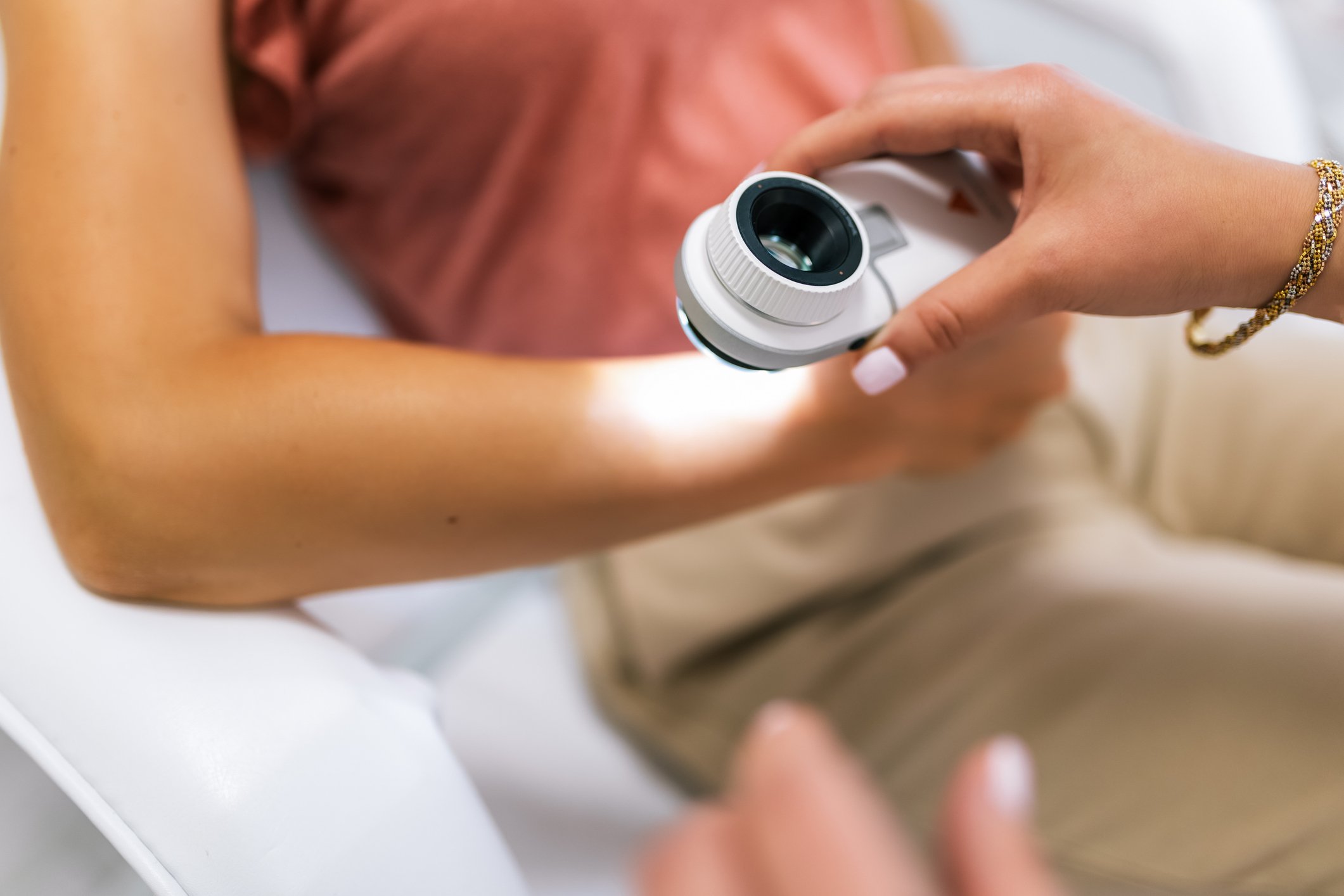
Skin Health
Expert Skin Care & Early Detection
Your skin health matters. At East Canberra GP, we specialise in early detection and treatment of skin conditions, including skin cancer. Our experienced doctors provide thorough skin checks and expert advice to help you stay on top of your skin health.
Our Skin Services
-
Skin cancer occurs when skin cells are damaged, for example, by overexposure to ultraviolet (UV) radiation from the sun.
There are three main types of skin cancer:
· Basal cell carcinoma (BCC)
· Squamous cell carcinoma (SCC)
· Melanoma - the most dangerous form of skin cancer.
Both basal cell carcinoma and squamous cell carcinoma are known as non-melanoma skin cancer or keratinocyte cancers. Keratinocyte cancer is more common in men, with almost double the incidence compared to women. Melanoma is the third most common cancer in Australians (excluding keratinocyte cancers as data on incidence is not routinely collected). There are also rare types of skin cancer including Merkel cell carcinoma and angiosarcoma. These are treated differently from BCC and SCC.
Every year, in Australia:
· Skin cancers account for around 80% of all newly diagnosed cancers
· The majority of skin cancers are caused by exposure to the sun
· The incidence of skin cancer is one of the highest in the world, two to three times the rates in Canada, the US and the UK.
-
It is important to get a professional skin check by a doctor if anything suspicious appears on your skin or if you are high risk. Talk to your doctor about if and how often you should be getting a professional skin check.
Doctors use a number of tools and techniques to examine skin thoroughly, beyond what the naked eye can see. These include dermoscopy using a dermatoscope, digital monitoring and total body photography. These tools help reduce unnecessary biopsies and detect melanomas at an early stage, which can lead to a better outcome.
Dermoscopy
During a skin check, your doctor will use dermoscopy to closely examine your skin. They use a handheld microscope called a dermatoscope which allows them to see under the surface of the skin using polarised light and magnification. This helps them identify features that are not visible to the naked eye
How often do I need a professional skin check?
Not everyone needs a regular professional skin check. Sun protection is the most important defence against skin cancers. However, it’s important to know your skin, and if you see new or changing lesions – see your doctor. Regular skin checks are recommended for certain high-risk people, including those with:
· previous melanoma
· previous BCCs and SCCs
· lots of moles
· strong family history
The frequency of skin checks is individual, depending on your risk factors and response to treatments. If you have concerns or are unsure of your risk, discuss with your doctor.
-
We offer a range of treatments including surgical excision, punch and shave biopsies, cryotherapy, and topical creams. We also offer management of non-cancerous skin lesions which are problematic, causing concerns or for aesthetic reasons.
The treatment recommended by your doctors will depend on:
· the type, size and location of the cancer or skin lesion
· your general health
· any medications you are taking (these may increase the risk of bleeding after surgery or delay healing)
· whether the cancer has spread to other parts of your body.
Surgical Excision
Surgery to remove the cancer (surgical excision) is the most common treatment for both melanomas and non-melanoma skin cancers (BCC and SCC).
Excision Treatment Process
A local anaesthetic is used to numb the affected area. The lesion is then cut out with a margin of healthy skin to ensure all the cancerous cells have been removed. The size of the healthy margin of skin removed during the excision will depend on the type of lesion or skin cancer. The wound around the surgical site is then closed with sutures (stitches) and covered with a waterproof dressing. For cancers that are larger or in difficult areas, a skin flap or graft may be required to close the wound. The excised lesion is sent off to pathology to check the margin for cancer cells and to ensure it has been completely removed.
Excision Treatment Recovery
For a few days post excision there may be minor bruising and swelling. Pain or discomfort is usually minimal. Typically, where sutures are used, they are removed after about 1-2 weeks. There will be minor scar and this should be less noticeable over time.
Surgical Excision Prognosis
BCCs and SCCs have a high cure rate when treated with surgical excision (above 95% in most body areas). Treatment for melanoma usually requires wider excision margins and possibly further procedures depending on the type and invasiveness.
-
Skin Cancer Prevention
For best protection, we recommend a combination of sun protection measures:
· Slip on some sun-protective clothing – that covers as much skin as possible.
· Slop on broad-spectrum sunscreen with at least SPF50+. Put it on 20 minutes before you go outdoors and every two hours afterwards.
· Slap on a hat – that protects your face, head, neck and ears.
· Seek shade, especially in the hottest part of the day when UV levels are most intense.
· Slide on some sunglasses – make sure they meet Australian standards.


